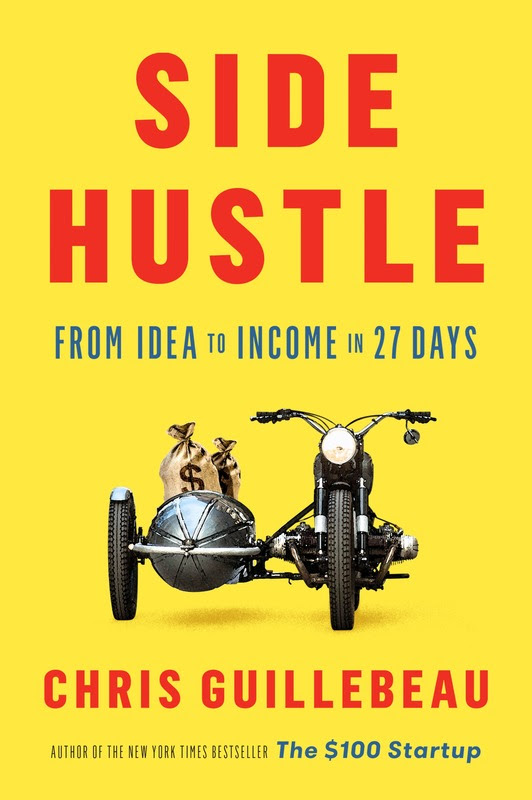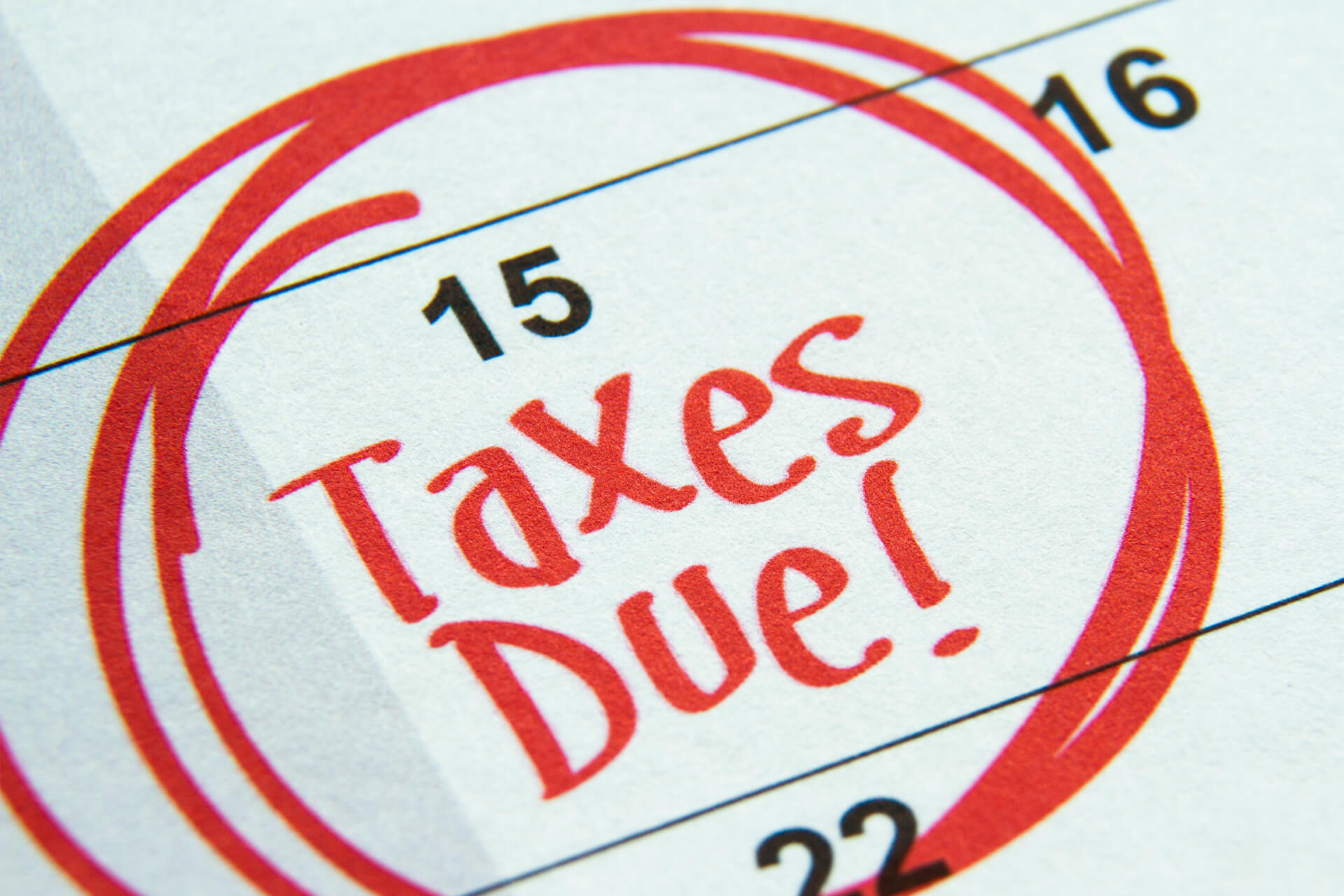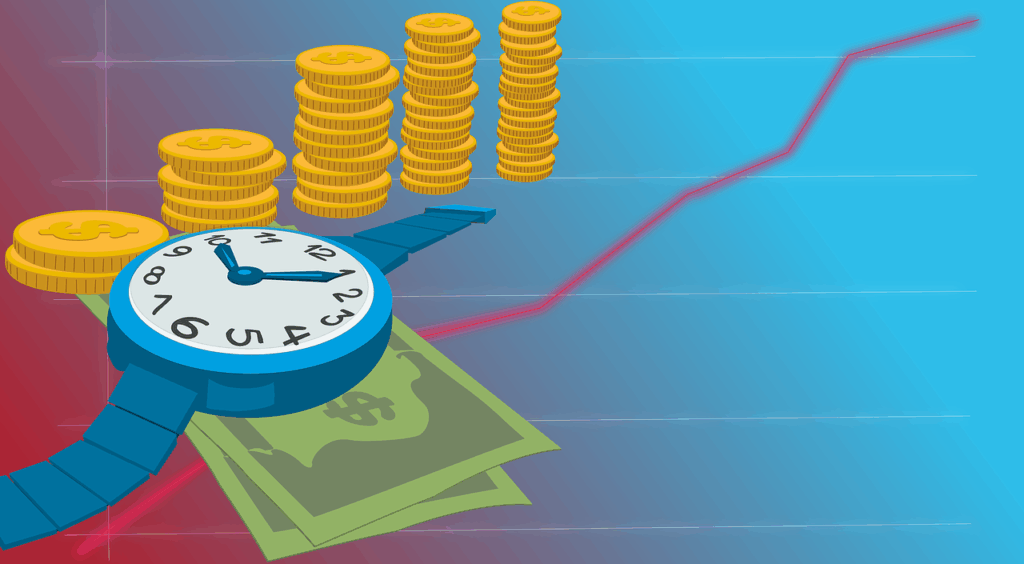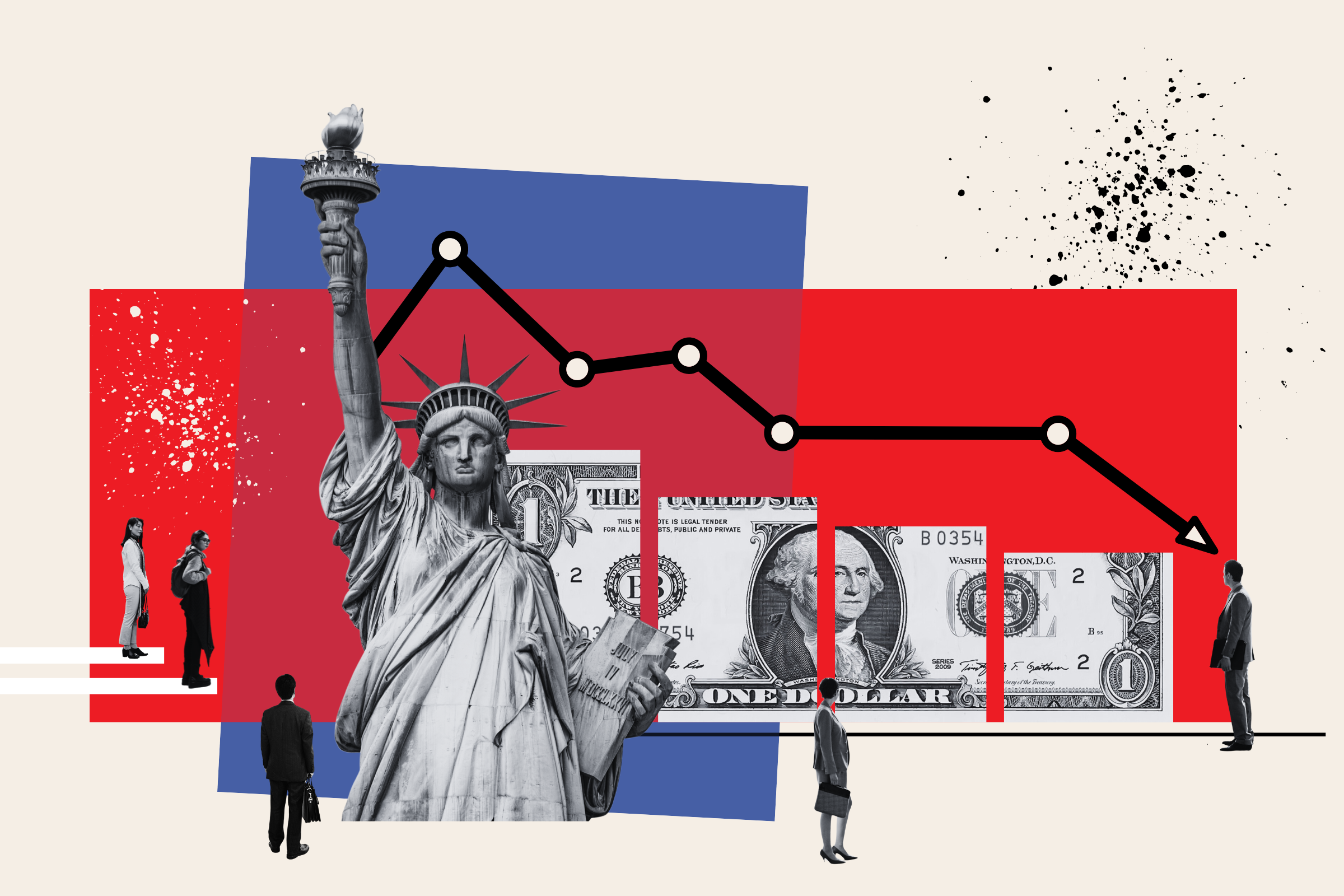The 30s are a pivotal decade for your financial life. This is where the decisions you make regarding saving, spending, and investing really start to define your future. It’s a time of immense opportunity, but also a period often marked by competing priorities – whether it’s planning for weddings, raising children, buying homes, or navigating significant career transitions. The financial landscape can feel complex and, at times, overwhelming, as you build the foundation for lasting wealth.
Many find themselves wondering where to begin amidst these life changes. There’s an unspoken pressure to hit certain milestones, yet the truth is, everyone’s financial journey is unique. Rather than striving for an arbitrary ideal, your 30s should be about building solid momentum. Consistent, informed efforts during this decade can lead to exponential growth, thanks to the power of compounding. The goal isn’t just to manage money, but to harness it to support the life you envision.
We understand that navigating these waters can be challenging, especially since formal financial education is often lacking. But you don’t have to navigate it alone. This article outlines 14 essential financial moves specifically tailored for your early 30s, designed to empower you with actionable advice, break down complex concepts, and help you forge a clear path toward financial mastery and peace of mind. Let’s dive into the first seven critical steps that will set you on a trajectory for long-term success.
1. **Maximize Your 401(k) Contributions (Especially with Employer Match)**This is often the cornerstone of early retirement planning. If your company provides a 401(k) plan and, crucially, offers to match your contributions, you are essentially leaving “free money on the table” by not participating fully. This employer match is an immediate, guaranteed return on your investment that is hard to beat anywhere else. It’s an incentive designed to help you save more, and it directly amplifies your retirement nest egg from day one.
To make the most of this, aim to increase your contribution rate gradually. The ultimate goal should be to hit the maximum allowable contribution each year, which is currently $23,000 for 2025 if you’re under 50. Even if reaching this maximum feels daunting initially, every incremental increase helps. Remember, “time is your friend here,” allowing “those small deposits [to] compound quietly in the background,” steadily growing your wealth over decades.
Beyond the employer match, contributing to your 401(k) offers significant tax advantages. Traditional 401(k) contributions are often pre-tax, reducing your taxable income in the present. This means you’re saving for retirement while simultaneously lowering your current tax burden. For those who anticipate being in a lower tax bracket in retirement, this deferred taxation can be particularly beneficial.
For existing 401(k) plans, especially if you’re not entirely sure how well they’re managed, a “free analysis through Blooom” can be invaluable. This service can “help you understand if your investments have the proper diversification, the correct asset allocation and that you aren’t paying too much in fees.” Ensuring your 401(k) is optimized means your money is working as hard as possible for you, avoiding common pitfalls like excessive fees or an unbalanced portfolio that could hinder growth.
2. **Establish a Robust Emergency Fund**An emergency fund is not merely a “rainy-day cliché”; it’s a vital financial safety net, acting as “the dam that keeps a sudden job loss or medical bill from flooding your finances.” The importance of this fund cannot be overstated, especially as you enter your 30s and responsibilities often grow. It provides a crucial buffer against unexpected financial shocks, preventing you from having to resort to high-interest debt when life inevitably throws a curveball.
A commonly recommended target for an emergency fund is to save “3–6 months of essential expenses.” This amount should be “parked somewhere accessible,” such as “a high-yield savings account.” The accessibility is key, as you need to be able to access these funds quickly when a true emergency arises. High-yield savings accounts offer a modest return while keeping your money liquid and safe, striking a balance between growth and availability.
The real “trick is leaving it alone unless it’s a true emergency.” This fund is not for impulse purchases, vacation savings, or non-essential spending. Its sole purpose is to provide stability during unforeseen circumstances like job loss, a major car repair, or a medical emergency. Regularly “check the balance on your emergency fund” and if you’ve had to tap into it, prioritize refilling it immediately. Your living expenses are likely higher than in your 20s, so reevaluating and adjusting your emergency savings goal is a smart move.
The sobering reality is that “61% of Americans could not cover an unexpected $1,000 expense,” illustrating how many are living precariously “on the edge of a financial cliff.” By building a substantial emergency fund, you are actively “step[ping] away from the cliff’s edge,” creating peace of mind and protecting your financial future from the myriad of unexpected bills that “pop up all the time.” This foundational step is arguably one of the most empowering financial moves you can make.
Read more about: Navigating the Financial Maze: Essential Mistakes to Avoid When Funding Your Child’s College Education

3. **Aggressively Tackle High-Interest Debt**If you’ve got “credit card debt dragging behind you, now’s the time to cut it loose.” This type of debt is “notoriously expensive – and unnecessary,” acting as a significant drain on your financial resources. Credit card “interest rates on cards are brutal, often 20% or higher,” and they “eat into every dollar you’re trying to save elsewhere.” This high-cost debt actively works against your efforts to build wealth, making it incredibly difficult to get ahead financially.
The context highlights the stark reality: “According to USA Today’s calculations, credit card companies charge an average interest rate of 16.71%, and some charge as much as 20% to 25%.” Comparatively, “You would never borrow money at those rates to buy a house or car.” Yet, many consumers unconsciously accept these high rates on everyday expenses. If you’re not paying off your credit card balance monthly, “you’re spending more than you can afford,” and the interest compounds, making the debt even harder to escape.
To effectively eliminate this burden, you need a clear strategy. “Some people swear by the ‘snowball’ method (paying smallest balances first) while others go ‘avalanche’ (highest interest rate first).” Both methods have their merits, but “Either way, just pick a plan and attack it like it owes you money because, well, it does.” The key is consistency and commitment. Additionally, “If you’re struggling with high interest rates, consider a personal loan through SoFi” to “consolidate your balances with a much lower interest rate,” which can make the repayment process more manageable.
Freeing yourself from high-interest debt is a pivotal step towards financial freedom in your 30s. “Once your non-mortgage debt is paid off, you can amplify your savings and have comfortable room for some fun spending money in your budget.” This not only improves your cash flow but also significantly reduces financial stress and allows you to redirect those funds towards investments and other wealth-building goals. It’s about taking “your finances by the horns and wrestle control of them once and for all.”
Read more about: Unlock Your Financial Superpower: 15 Must-Have Budgeting App Features Millennials Are Using to Win with Money

4. **Diversify Investments Beyond Work-Sponsored Plans**While your “401(k) is great,” it’s crucial to understand “it’s not the only show in town” when it comes to investing. Relying solely on your employer-sponsored retirement plan can limit your flexibility and potential growth. Expanding your investment horizons beyond work accounts is a smart move in your 30s, offering additional avenues for wealth accumulation and access to funds before traditional retirement age.
One excellent option is “A taxable brokerage account [which] lets you invest in stocks, ETFs, or mutual funds without waiting until you’re 59½ to touch the money.” This type of account provides liquidity and control that a 401(k) typically doesn’t, allowing you to withdraw funds for other significant life goals like a down payment on a home or starting a business, albeit subject to capital gains taxes. “Even modest investments here can grow into something meaningful over time,” demonstrating the power of consistent, diversified investing.
For those seeking greater tax flexibility for retirement, considering “Maxing Out Your Roth IRA” is highly beneficial. With a Roth IRA, “you still pay taxes on it now, but it’s tax-free in retirement, even if it grows by 1,000% between now and then.” This offers tremendous advantages, especially if you anticipate being in a higher tax bracket later in life. Furthermore, Roth IRAs provide incredible flexibility: “you can use your Roth IRA funds to buy a house, penalty-free,” and “you can use your Roth IRA to pay for your children’s college tuition, again penalty-free,” showcasing their multifaceted utility beyond just retirement.
The landscape of investment tools has become increasingly accessible. “Many apps now make it feel less intimidating,” providing user-friendly platforms for managing your investments. However, for personalized guidance, “a good old-fashioned call to Fidelity or Schwab can be surprisingly helpful if you like a human voice.” Fidelity Wealth Services also offers various service levels, including “Fidelity Advisory Services, Fidelity Wealth Management, and Fidelity Private Wealth Management,” providing tailored advice and support for your investment journey as you progress. This blend of self-directed and advised investing ensures you’re leveraging all available resources.
5. **Master Your Credit Score**Your “credit score isn’t just some boring number banks care about”; it’s a powerful financial tool that profoundly impacts major aspects of your life. In your 30s, as you contemplate significant purchases like a home or car, a strong credit score becomes increasingly vital. It “determines what you pay for mortgages, car loans, and even sometimes your ability to rent an apartment,” making it a direct determinant of how much your financial life will cost you.
The impact of credit on borrowing costs is significant. The context illustrates this with a compelling example: “David has terrible credit” and qualifies for a loan with “a 10% down payment, three mortgage points, and a 6.5% interest rate” on a $250,000 house, leading to over $286,000 in interest over 30 years. In stark contrast, “Rebecca has excellent credit,” buying the same house with “a 3% down payment, no points, and a 4% interest rate,” paying only “$174,283.55 in interest” over the same period. This nearly $112,000 difference underscores the immense financial power of good credit.
To improve and maintain excellent credit, consistent habits are key. You should “Keep credit cards open and paid on time, and don’t max them out unnecessarily.” Responsible credit usage demonstrates reliability to lenders. “Checking your score regularly through sites like Credit Karma or Experian helps you catch errors before they cause real problems,” allowing you to be proactive in managing your financial reputation.
Beyond conventional methods, tools like “Experian Boost” can offer an advantage. This “free program will allow you to use your payment history from utility bills to improve your credit score,” leveraging everyday financial habits to your benefit. By actively monitoring and strategically improving your credit, you’re not just building a number; you’re unlocking better financial opportunities and saving substantial amounts of money over your lifetime, ensuring your financial situation resembles Rebecca’s more than David’s.
Read more about: Unlock Your Next Adventure: The Best No-Annual-Fee Travel Credit Cards for Savvy Explorers

6. **Review and Optimize Your Insurance Coverage**As you transition into your 30s, your life likely entails more responsibilities and assets than in your early 20s, meaning “you’ve probably got more to lose than you did at 22.” This elevated level of personal and financial exposure makes a thorough review and optimization of your insurance coverage absolutely critical. Insurance acts as a crucial protective layer, safeguarding your financial stability against unforeseen events.
Start with health insurance, as assuming “a health emergency won’t happen to you is a recipe for financial and physical disaster.” You need to be prepared for potential medical bills, whether they come “five years from now, or… tomorrow.” Understand the various factors impacting health insurance premiums and choose a policy tailored to your family’s needs. Options range from “a low-cost, high-deductible policy” with an “HSA from Lively” if you’re single and healthy, to “a traditional high-cost insurance policy” if your circumstances dictate more comprehensive coverage. If employer-provided insurance isn’t an option, the Health Insurance Marketplace is available.
Beyond health, consider life and long-term disability insurance, which “make the most sense for households where one partner earns the majority of the income and the household depends heavily on that partner’s ability to earn.” Life insurance provides financial support to your dependents if you pass away, while disability insurance “offers additional coverage like protecting a portion of your income should you become sick or injured.” These policies are often “cheaper the younger you are, so locking them in now makes sense” to secure lower premiums for years to come.
Don’t overlook other essential coverages. For instance, “even renter’s insurance if you don’t yet own a home” is a vital protection for your belongings at a minimal cost. The objective is to assess your “current responsibilities, including your dependents,” and ensure you have a “strengthened safety net.” Tools like PolicyGenius can help you “work with all the top insurance companies so you know you’re going to get the best rates,” ensuring you’re adequately protected without overpaying. This holistic approach to insurance is fundamental to solidifying your financial foundation.
Read more about: Your Insider Guide to Unlocking the Cheapest International Flights from the US: Mastering the Best Booking Tools

7. **Regularly Conduct Financial Check-ins and Budget Reviews**While it “sounds boring,” carving out dedicated time “every month or at least quarterly to look over your finances makes a massive difference.” Regular financial check-ins are not about restriction; they are about gaining clarity, identifying areas for improvement, and ensuring your money is actively working towards your goals. This consistent habit transforms nebulous financial aspirations into tangible progress, keeping you on track for wealth building.
These check-ins serve multiple critical purposes. You can “catch bad habits,” such as impulse spending or subscriptions you no longer use, and “see where your money’s leaking,” allowing you to plug those gaps. Moreover, they provide an opportunity to “adjust course” as your life and financial priorities evolve. Your 30s are dynamic, with shifting incomes and expenses, so “rethink[ing] your budget” regularly is essential. This ensures your spending aligns with your current goals, whether they’re for retirement, college, or major purchases.
For those who find “spreadsheets make your eyes glaze over,” there are numerous user-friendly alternatives. “There are some surprisingly pleasant budgeting apps out there these days (YNAB, Monarch, even good old Mint)” that “make it feel less like homework.” These tools can automate tracking, categorize expenses, and provide visual summaries, simplifying the process of understanding your financial landscape. The goal is to find a system that works for you, making financial review less of a chore and more of an empowering routine.
Beyond personal accountability, “Partner With a Budget Buddy” or forming “a small group” can significantly boost your progress. “A joint study by economic researchers from Harvard, Columbia, and a Chilean team found that when people shared their economic goals and progress in small groups, their savings rate nearly doubled.” This “100% increase in savings rate” highlights the power of peer pressure and shared accountability. Regularly reviewing your figures and celebrating progress, whether solo or with a buddy, makes “growing your wealth tangible and real, rather than nebulous and conceptual.”
Accelerating Your Wealth Journey: The Next 7 Smart Financial Strategies for Your 30s, Focusing on Future Goals, Income Diversification, and Long-Term Security.
Building on the strong foundation laid by the first seven financial moves, your 30s present a unique opportunity to accelerate your wealth journey. This next set of strategies moves beyond essential defense to proactive offense, focusing on securing your future, diversifying your income streams, and ensuring long-term financial stability. It’s about consciously shaping the financial narrative of your life, making deliberate choices that amplify your efforts and align with your evolving aspirations.
Now, let’s explore the next seven smart financial strategies that will propel you toward mastery and lasting peace of mind, empowering you to navigate life’s big moments with confidence.
8. **Think About Estate Planning (Yes, Already)**It might feel a bit premature to consider estate planning in your 30s, but this isn’t just for retirement-age individuals. It’s a fundamental aspect of responsible adulthood that provides immense peace of mind and protects your loved ones from potential hardship. The unfortunate reality is that “60% of American adults have no estate plan,” a statistic likely even higher for those in their 30s, leaving families vulnerable during already difficult times.
An estate plan ensures that your assets and wishes are clearly documented, preventing a messy legal and financial situation for your family should the unexpected occur. Even if you only have a 401(k) and a car, setting up a will and naming beneficiaries is crucial. This proactive step means your money and belongings will go exactly where you intend, rather than being subject to lengthy and complex legal processes.
Most comprehensive estate plans include essential documents like a will or living trust, powers of attorney, and life insurance, as mentioned in our previous section. Services like Trust & Will can help you set these up, hopefully ensuring your family won’t need them for another “60 years,” but providing critical protection just in case. It’s about leaving a legacy of clarity and care, not chaos.

9. **Start Talking About Money With Your Partner**If you’re in a serious relationship, avoiding conversations about money is akin to “ignoring a leak in the ceiling; it only gets worse.” Financial transparency and alignment with your partner are absolutely vital for a healthy, wealthy marriage and for achieving shared financial goals. These conversations might not always be easy, but they are undeniably necessary.
Begin with open, nonjudgmental discussions about your individual spending habits, financial goals, and even your fears surrounding money. It’s not about agreeing on every single detail, but about understanding each other’s perspectives and fostering honesty. Your spouse will be your financial partner for life, so ensuring you’re aligned on money matters from the beginning is paramount for both your net worth and marital harmony.
It’s important to discuss what savings rate you both need to achieve to reach those goals, recognizing that higher savings often mean deferring gratification. If one partner is more willing to make sacrifices than the other, open communication is essential to find a compromise that works for both of you. This consistent dialogue lays the groundwork for shared financial success and prevents years of tension later on.
Read more about: From Scarcity to Stature: The Extraordinary Journeys of 13 Billionaires Forged by Difficult Childhoods
10. **Figure Out Your Big-Ticket Goals Early**Your 30s are a prime time to crystallize what truly matters to you financially. Do you envision yourself buying a house, starting a business, or saving for your children’s college education? The earlier you define these “big-ticket goals,” the sooner you can create a strategic roadmap to achieve them. This clarity transforms abstract dreams into actionable plans.
Having clear financial priorities is incredibly empowering. It helps you make informed decisions about your spending and saving, allowing you to say “no” to things that don’t align with your vision. For instance, you might reconsider shelling out for an expensive SUV “just because everyone at work has one” if that money could be better used for your long-term housing down payment.
By proactively identifying these significant milestones, you can structure your budget and investment strategies around them. This forward-thinking approach ensures that your daily financial choices contribute directly to your larger life ambitions, accelerating your progress toward a future you’ve intentionally designed. It transforms casual spending into purposeful allocation of resources.
Read more about: Mark Cuban’s Ultimate Playbook: 15 Timeless Tips to Fortify Your Retirement Against Financial Disaster

11. **Don’t Overlook Health Savings Accounts (HSAs)**If you have a qualifying high-deductible health plan, a Health Savings Account (HSA) can be a stealthy yet powerful vehicle for both current and future financial well-being. It’s often touted as having a “triple tax advantage” that makes it an incredibly efficient tool for saving and investing, quietly growing your wealth over time while covering medical costs.
The money you contribute to an HSA is typically tax-free, it grows tax-free, and if you use it for qualified medical expenses, even decades later, it can be withdrawn tax-free. This combination of benefits is hard to find elsewhere in the financial world. Moreover, some context points out that you can explore options like “an HSA from Lively” if you’re single and healthy, highlighting its suitability for various life stages.
Beyond its immediate tax advantages for medical expenses, an HSA offers remarkable long-term flexibility. After age 65, you can treat it much like a traditional IRA, using the funds for any purpose without penalty, though withdrawals for non-medical expenses would be taxed as ordinary income. This makes it an excellent, dual-purpose account that shores up both your health care and retirement savings, proving to be far more than just a savings account for doctor’s visits.
Read more about: Unlock Your HSA’s Full Potential: A Practical 2026 Guide to Maximize Your Health Savings Account
12. **Keep Lifestyle Creep in Check**As your income grows in your 30s, it’s incredibly “tempting to upgrade everything” – a fancier apartment, pricier dinners, or new gadgets you might not even need. This phenomenon, known as lifestyle creep or lifestyle inflation, can subtly erode your financial progress by gobbling up raises and leaving you with little extra to save or invest. The context explicitly states, “As income increases, people’s wants and needs tend to do the same.”
To counter this, make a conscious effort to channel those raises toward investments or debt payoff rather than immediate consumption. By prioritizing your savings goals “like an expense you simply cannot avoid,” you build wealth more efficiently. Automating savings can be a powerful antidote, helping you stick to a budget and resisting the urge to spend “extra” cash on unnecessary purchases.
This isn’t about deprivation, but about intentional spending and avoiding the trap of “keeping up with others around you.” The context reminds us that “No one cares. Seriously, no one else is paying attention to what kind of car you drive.” Ditching the “status car” and opting for a reliable, low-cost vehicle can free up significant funds. Future you will certainly thank you for prioritizing long-term financial health over fleeting displays of affluence.
Read more about: Reclaiming Your Attention: A Practical Guide to Breaking Free from the Endless Scroll of Social Media

13. **Start a Side Hustle (But Don’t Burn Out)**Your 30s are an excellent time to explore income diversification through a side hustle. This isn’t just about making extra money; it’s about potentially accelerating your financial goals, exploring new skills, and even testing the waters for a full-fledged business down the line. Whether it’s consulting, selling vintage items, teaching a skill, or something else that genuinely interests you, the possibilities are vast.
Beyond simply driving for a ride-sharing service, the context encourages getting creative and getting “paid for doing something you love.” For example, a friend who hosts food and beverage tours in Baltimore not only earns extra income but also has fun, often receiving tips and building connections with local establishments. Hobbies can even save you money, as demonstrated by homebrewing beer versus buying craft beers.
The additional income generated by a side gig can significantly boost your savings, debt repayment, or investment contributions, moving you closer to your financial milestones faster. It can also provide a valuable sense of entrepreneurial fulfillment. However, it’s crucial to “be mindful of your energy” to prevent burnout, ensuring that your side hustle remains a beneficial addition rather than an overwhelming burden.

14. **Educate Yourself on Taxes Beyond April**Many people view taxes as an annual event confined to April, but smart tax management is a year-round strategy that can significantly impact your wealth. “Filing taxes in April is just the tip of the iceberg.” Proactive, ongoing education about tax implications can help you make more informed financial decisions, optimizing your money’s growth and preserving more of your hard-earned income.
Smart tax moves extend throughout the year and include actions like adjusting your withholding to ensure you’re not giving the government an interest-free loan, strategically contributing to tax-advantaged retirement accounts, or even “harvesting investment losses” in taxable accounts to offset capital gains. These techniques, though potentially complex, can result in tangible savings.
While “Fidelity does not provide legal or tax advice,” the importance of understanding these complexities is clear. The context suggests that even “a one-hour chat with a CPA can reveal ways to keep more of your money.” Investing time in understanding tax laws and consulting professionals can lead to substantial long-term benefits, making sure you’re leveraging every opportunity to build wealth efficiently and securely.
***
Read more about: The $2,000 European Dream: How Americans Are Redefining a Richer Life and Finding a Permanent Home Abroad
Navigating your 30s financially is less about hitting arbitrary milestones and more about building powerful momentum. By taking control of your financial narrative through these smart moves, you’re not just managing money; you’re actively shaping the life you want to live. Remember, “Either you control your money, or your money controls you.” By implementing these actionable strategies, you’re firmly taking the reins, empowering yourself to end your 30s far wealthier and more secure than you began them. This is your decade to truly thrive, supported by a robust and intentional financial plan.










